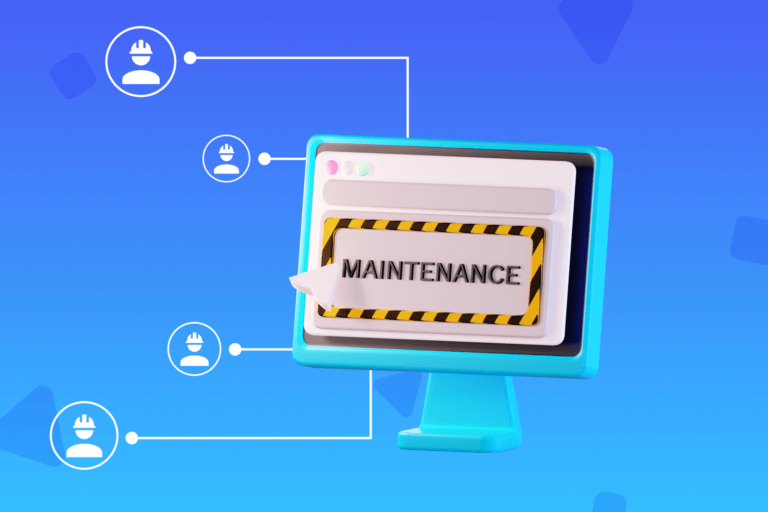Registering these tasks in a physical or electronic document, in a detailed, clear, orderly and precise way, guarantees the provision of the service and provides a powerful management tool that helps to retain customers and consolidate future competitiveness.
In an increasingly demanding and competitive market, maintenance reports are the only concrete evidence that the technical personnel in charge indeed did provide a field service.
This characteristic makes these documents the “soul of any business”, to the extent that, through them, clients can quantify the quality, agility and organization of the services offered by a supplier company.
In this way, through this particular “technical showcase”, the supplier has the great possibility of properly demonstrating the added value of their work. How do we do it? Through reports that reflect the reliability of our service and, at the same time, guarantee our clients that the actions were actually carried out.
This last point is transcendental, since it makes no sense to have an excellent service, if the company is not able to demonstrate and prove its effectiveness, effectively and convincingly.
MAIN FEATURES
These theoretical advantages are meaningless if, at the same time, the technical teams of the company are not aware of the planning, and how to carry out the maintenance work. Condition that includes knowing in detail those elements that cannot be missing for a report to be complete.
For this, it is necessary to take into account the following key pillars:
Professional headline: It may seem like a minor piece of information, but we always have to pay attention to formal details. For example, a good professional header should have the basic data of the client such as company name, Fiscal-Tax Number, address, and corporate image. This shows neatness and generates a better impression on customers and contacts.
Standardization: It is essential to have a unique and attractive design or format, which includes the client’s logo and distributes all the information in an organized manner.
Question sequence: This element is essential for the field technician to have a good understanding of all the points that we need to check. For this, it is necessary to maintain a logical and intelligent order, without excess or lack of information, which facilitates agility, and does not generate unnecessary or redundant work.
Use of photographs: As the saying goes “a picture worth more than a thousand words” and this characteristic is aptly applied to a good maintenance report. Through photos, the customer can be shown the “before and after” of the service, as well as the status of the assets during operations, among other advantages. This provides security and reliability for both parties.
Compliance and non-compliance issues: This feature is especially useful for conducting audits and inspections, and checking the status of assets. It is also essential for extending equipment life, repairing or changing parts, and guiding the next steps in maintenance tasks.
In addition, according to the maturity of the process and the technology used, this step can be useful for to the generation of valuable data for future strategic decisions. Therefore, we must have special care in order to include all relevant information throughout the process.
If the companies and teams in charge follow carefully each of these organizational and planning steps, the maintenance reports become effective tools for agility and productivity, both in fieldwork and in daily relationship with customers.
WHAT SHOULD NOT BE DONE
However, beyond the comparative advantages that order and standardization in the reports provide, companies and technical teams must also consider what should “NOT” be done. This will avoid mistakes that can lead to waste of human and material resources.
At this point, it is convenient to take note of five common mistakes that companies and their teams commit, consciously or unconsciously, in the generation of their reports.
1 – Not listening to the customer
Although it may seem incredible, it is the most common mistake, because in the work routine knowledge of the cause and experience are usually valued, but, unfortunately, it is forgotten to listen and understand the needs and requirements of each client.
To avoid this failure we must maintain a permanent and fluid contact; call to ask if everything is in order; conduct quick surveys during technical visits; and study the service history, to anticipate scenarios and improve efficiency in our response times. We also must remember that there are data and information that make sense to one customer, but not necessarily to everyone else.
For example, we may ask to our clients in what format they prefer maintenance reports, or if they already have a standard to follow.
2 – Typographical errors
It is an error that occurs very frequently, especially if the reports generated manually, using paper formats or Excel-like spreadsheets.
On paper, typos commonly filled by technicians can cause misinterpretation of information. Whereas, in the electronic spreadsheets of manual filling, important data could be forgotten or omitted.
All this can result in wrong or incomplete reports, which will have very negative effects for both the client and the service provider.
3 – Lack of proof
As another popular saying goes, “words fly and what is written stays”. Therefore, for a valid and successful report we must always prove that we provide the service. Action that can only be carried out with the respective voucher.
At this point all types of registration are valid. We can take photos, create preforms, and establish certificates for physical or digital signature, among other options. This will allow a complete history of customers and assets, where we can also incorporate the manufacturer’s guidance and observations. Nor should we forget to schedule the entry and exit times of the technicians, as well as the workloads established for the teams, whether internal or external.
4 – Lack of history
It is another fundamental pillar, since having data and indicators of the appointments made significantly facilitates maintenance routines. Especially if there are a large number of teams and clients to take care of
This history not only helps in the verification and reliability of the process, but also in the definition of more strategic and efficient routines for equipment and assets.
This implies, for example, knowing which parts we must change, who are the technicians responsible for each service, and what is the frequency of visits made, among other important variables. Point that acquires special relevance if, during the process, incidents or accidents occur, or when the client requests this information.
Lacking this data not only implies delay, but also means losing credibility and competitiveness in the market.
5 – Do not update work tools
As mentioned above, many of the maintenance reports are still on paper and Excel spreadsheets. Although they are valid methods, the speed of response and the greater efficiency that the market requires today, needs evolving towards more agile and efficient tools.
This translates into rely on technology, which currently offers a large number of software options to prepare maintenance reports safely and reliably.
THE DIGITAL CONTRIBUTION
Producing reports using digital tools allow us to gather the best of both worlds, using features and functionalities that streamline the respective actions and lead us to meet more accurately the operational requirements of both the company and its customers.
Of course, being up-to-date is not only about implementing technological tools, but also about being in tune with market trends, carefully collecting and analyzing data and indicators and, fundamentally, constantly training the personnel in charge.
All of this will allow us to provide a more efficient service and, at the same time, have tools that ensure better strategic decision-making, as well as the timely fulfillment of objectives.
The key lies in choosing the tool that best suits the needs and requirements of each company, and that allows it to offer an agile, reliable and quality service.






